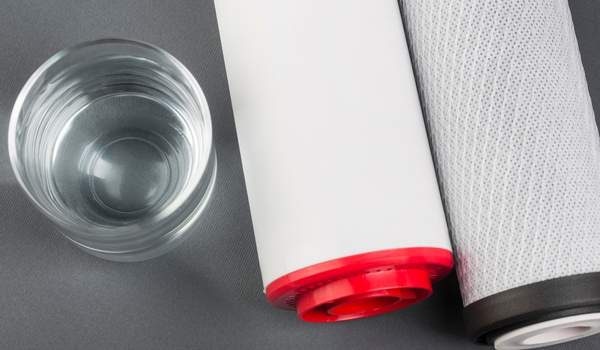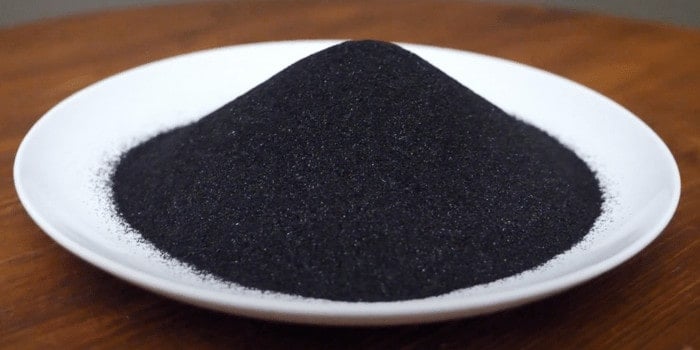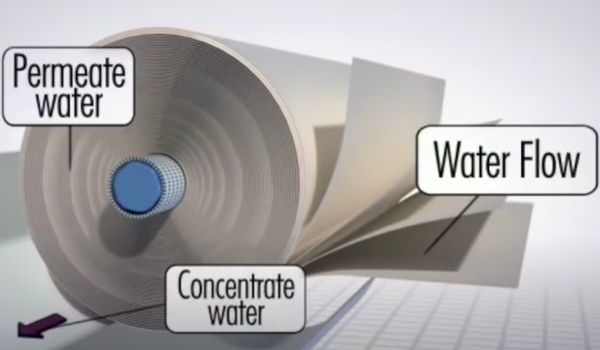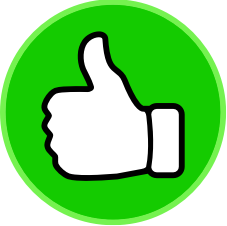Most whole-home water filters use cartridges to trap contaminants — but not all cartridges are created equal.
From sediment screens to carbon blocks and chemical media — each type targets different water problems. And if you’ve ever wondered what “5 microns” actually means or whether you need a jumbo 20-inch cartridge… you’re not alone.
Let’s break down the most common cartridge types, sizes, and what actually matters when picking the right one.
✅ Quick Takeaways
- 🧱 Filter cartridges come in mechanical, chemical, adsorption, and ion exchange varieties
- 📦 Sizes vary — standard is 2.5” x 10”, but large 4.5” x 20” cartridges are gaining popularity
- 🔬 Micron ratings tell you how fine a filter is — smaller = more filtration, but shorter lifespan
- 🌀 Backwashing systems clean themselves, while cartridge filters require replacement
- 🧪 Your water test should guide which cartridges make sense for your home
💡 Why Filter Type Matters

Not all water filters work the same way — some catch debris, others remove chemicals, and a few do both. The right cartridge for your home depends on what’s in your water and what you want to remove.
👇 Here’s a quick look at the main types:
| 🔍 Filter Type | 🎯 Targets | 💡 Best Use |
|---|---|---|
| 🧱 Mechanical (Sediment) | Dirt, rust, sand | First stage in most systems |
| 🧲 Carbon (Adsorption) | Chlorine, VOCs, taste & odor | Great for city water |
| ⚗️ KDF (Chemical) | Heavy metals, chlorine, sulfur | Best in combo with carbon |
| 🧪 Salt-Free / Sequestration | Hard minerals (modification only) | Alternative to softeners |
| 🔁 Ion Exchange | Hardness minerals (removal) | Traditional softeners |
| 💧 RO & Ultrafiltration | Dissolved solids, microbes | Ultra-purified water |
🛠️ Choosing What Works for You
Now that you’ve seen the landscape, let’s break each type down. Whether you’re dealing with rust, chlorine, or something trickier like sulfur or lead, there’s a filter media built for the job — and we’ll show you what it looks like in action.

🧱 Mechanical Filters (Sediment)
Mechanical cartridges physically block particles like rust, sand, and silt. Think of them like a fine mesh strainer — except these catch particles as small as 1 micron or less.
There are two common styles:
🔁 Pleated (Surface) Filters
- Made of folded paper or polyester
- Trap larger particles on the surface
- Easy to clean and reuse in some systems
- Good for high flow but lower precision
🌀 Depth Filters
- Made of melt-blown or string-wound fibers
- Trap particles throughout the filter (not just the surface)
- Capture smaller contaminants
- Clog faster, but filter more thoroughly
🧪 Pro Tip: Depth filters are better for protecting delicate downstream filters. They’re often the first stage in multi-cartridge setups.
🧲 Adsorption Filters (Carbon & Alumina)

Adsorption happens when contaminants stick to the surface of a filter media — like dust on tape. These filters excel at improving taste and reducing chemicals.
🥥 Carbon Filters
- Trap chlorine, VOCs, and unpleasant odors
- Often made from coconut shells
- Found in pitchers, fridge filters, and under-sink systems
Types of carbon cartridges:
- GAC (Granular Activated Carbon): Loose media, low pressure drop, great for taste/odor
- Carbon Block: Solid form, more surface area = better removal rates
- Catalytic Carbon: Targets chloramine (a chlorine alternative)
🧪 Activated Alumina
- Best for fluoride and arsenic
- Often used as a post-filter in RO systems
💡 Good to Know: Carbon is great for chlorine and smell, but not for heavy metals or minerals. For that, you’ll want to pair it with other media.
⚗️ Chemical & Ion Exchange Filters
These filters go beyond physical capture — they transform contaminants using clever chemistry or electrical charges.
🔬 Chemical Filters (KDF)
- Use redox reactions (exchange of electrons) to neutralize contaminants
- Target chlorine, hydrogen sulfide, and heavy metals like lead and mercury
- Often paired with carbon in whole-home systems
🔁 Ion Exchange Filters
- Swap unwanted ions (like calcium or magnesium) with harmless ones (like sodium or hydrogen)
- Found in salt-based water softeners
- Great for reducing scale, improving taste, and protecting plumbing
💡 Pro Tip: KDF filters are powerful but need good water flow to work well. Ion exchange is the go-to for hard water — and can be paired with sediment or carbon filters for a full-spectrum solution.
🧬 Membrane-Based Filters: RO & Ultrafiltration

If you’re chasing near-pure water, these filters are as close as it gets. They use ultra-fine membranes to block microscopic particles — even bacteria.
🌀 Reverse Osmosis (RO)
- Uses a semi-permeable membrane to filter out up to 99% of contaminants
- Removes fluoride, nitrates, heavy metals, and more
- Requires high pressure — most systems include a pump
- Typically installed under the sink, but whole-home RO systems are available
🧵 Ultrafiltration (UF)
- Uses a fine membrane that filters down to 0.01 microns
- Removes sediment, bacteria, and some viruses
- Doesn’t remove dissolved solids — but preserves healthy minerals
- Runs on standard water pressure — no electricity needed
💡 UF is a great alternative if you don’t need to remove fluoride or TDS but still want to target bacteria and particles. RO is best for broad-spectrum filtration.
📏 What Is a Micron Rating?

Every mechanical filter cartridge has a micron rating — it tells you the size of particles the filter can remove. The lower the number, the finer the filtration.
Here’s a quick breakdown:
| 🧪 Micron Size | 🔍 What It Captures | 💧 Filter Type |
|---|---|---|
| 50+ microns | Sand, silt, rust flakes | Coarse sediment filters |
| 25 microns | Smaller grit, scale, debris | General-purpose filters |
| 5 microns | Most sediment, some bacteria | Standard pleated/depth filters |
| 1 micron | Fine particles, protozoa | High-efficiency sediment filters |
| 0.1–0.01 micron | Viruses, bacteria, microplastics | UF and RO membranes |
💡 Nominal vs. Absolute: Nominal filters remove ~80% of particles at their rated size. Absolute filters remove 99.9% — key when filtering for things like lead or cysts.
🔧 Sizing Your Filter for the Whole Home
When people say “size,” they might mean:
- Physical size of the cartridge (how big it is)
- Capacity (how long it lasts before needing a change)
- Flow rate (how much water it can handle at once)
Most whole-home systems use one of four standard sizes:
| 📐 Cartridge Size | 🏠 Best For |
|---|---|
| 2.5″ x 10″ | Small homes, tight budgets |
| 2.5″ x 20″ | Moderate use, longer intervals |
| 4.5″ x 10″ | Better flow, lower pressure drop |
| 4.5″ x 20″ | High demand homes — fewer replacements |
💬 Pro Tip: Bigger filters mean better flow and fewer clogs — which protects downstream filters and saves you money in the long run.
🆚 Cartridge, Tank, or Backwash? Here’s the Breakdown

Choosing a filter style isn’t just about budget — it’s about maintenance, pressure needs, and where you’ll install it. Here’s how cartridge, tank-style, and backwashing filters compare:
| 🔧 Filter Type | 📦 How It Works | 🔁 Maintenance | 💡 Best For |
|---|---|---|---|
| 🧱 Cartridge | Replaceable filters in compact housings | Frequent — change every 3–6 months | Budget setups or low-pressure homes |
| 🗼 Tank-Style Cartridge | Large vertical tank holds jumbo filter cartridges | Less often — may need 2-person job to change | Homes with moderate use and decent pressure |
| 🔄 Backwash System | Self-cleaning tanks flush contaminants automatically | Low — mostly hands-off | High-use households with strong water pressure |
💡 Need help choosing?
If you’re dealing with low pressure or just want an easy install, stick with standard cartridges. Want less maintenance? Tank systems or backwash filters are worth the upgrade — just make sure your plumbing setup can support them.
💡 Need help choosing?

If you’re dealing with low pressure or just want an easy install, stick with standard cartridges. Want less maintenance? Tank systems or backwash filters are worth the upgrade — just make sure your plumbing setup can support them.
| 🚩 Concern | 💧 Suggested Filter | 🛠️ Why It Works |
|---|---|---|
| Muddy or cloudy water | Sediment cartridge | Removes dirt, rust, and sand particles |
| Chlorine taste or odor | Carbon block or GAC filter | Adsorbs chemicals and improves flavor |
| Heavy metals like lead or mercury | KDF or RO membrane | Targets toxic metals through redox reactions or fine filtration |
| Hard water or limescale | Ion exchange or salt-free conditioner | Removes or neutralizes hardness minerals |
| Bacteria or viruses | Ultrafiltration or UV | Traps or deactivates microorganisms |
🧪 Pro Tip: If you’re not sure what’s actually in your water, the best first step is getting it tested. Results can help you skip the guesswork and choose a system that actually fits your needs — no overbuying, no trial-and-error.
💬 Final Thoughts
Choosing the right filter cartridge for your whole-home system isn’t just about size — it’s about function. Whether you’re targeting sediment, chlorine, heavy metals, or microbes, there’s a cartridge type that’s designed for the job.
Start by testing your water so you know exactly what you’re dealing with — then match your system to your needs. You don’t need to overspend or overcomplicate things. Just focus on what matters most for your household.
💡 And remember: the best filter is the one that actually solves your water problems.
 156 people found this helpful. Was this guide helpful to you?
156 people found this helpful. Was this guide helpful to you? 

